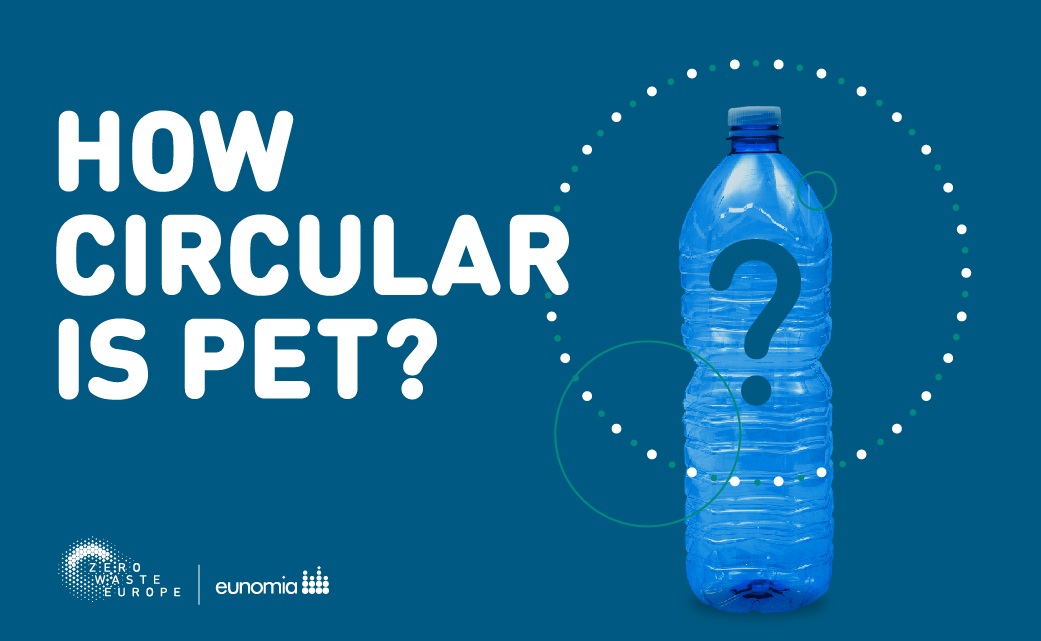
New research produced for Zero Waste Europe by sustainability consultancy Eunomia Research & Consulting shows that most Polyethylene terephthalate (PET) plastic recovered from bottles in Europe does not make its way back into new PET bottles. Significant Improvements in PET design, collection and recycling will be needed to improve circularity.
Published today, the “How circular is PET?” report presents a picture of the true state of circularity of this material in bottles in Europe – including how much material from bottles is collected for recycling; how much of it is actually recycled; and how much of recycled PET is put into new bottles.
The research finds that:
- Most recycled PET recovered from bottles in Europe is being used in other lower-grade PET applications such as trays, film, strapping or fibres – with new bottles placed on the market containing an average of just 17% of recycled PET, despite a recycling rate of around 50%.
- Recycled content for all PET product streams – including single-use plastic trays, textile fibres, films and strapping – is sourced from bottles, due to very low levels of recycling for non-bottle PET applications. Of the 1.8 million tonnes of recycled flake output from bottles, only 31% is made into pellets for bottles, with the rest (69%) going into other PET products.
- The picture for PET bottle recycling varies across the continent, with some countries achieving high recycling rates mainly due to the presence of Deposit Return Systems (DRS), while others have lower recycling rates when only employing separate collection systems.
Key EU policy changes and commitments from large brands show an ambition to increase PET circularity. However, the report shows that higher levels of recycled content may be achievable with the implementation of enhanced collections such as Deposit Return Systems (DRS); moving from coloured and opaque bottles to clear bottles; and prioritising bottle-to-bottle recycling to prevent cascade to other non-bottle PET applications. In addition to mechanical recycling, there is potential for chemical depolymerisation technologies to contribute to overall PET circularity – provided they reach full maturity and their full impact is assessed.
With those changes, it may be possible to reach an upper limit between 61% and 75% recycled content in bottles by 2030; but, under current market conditions, this could reach as low as a minimum policy-driven target of 30%.
Dorota Napierska, Policy Officer on Toxic-Free Consumption & Production at Zero Waste Europe, says: “This study shows that PET is not very circular today and will remain as such in the future unless substantial policy changes are introduced; and technical and economic barriers are removed. We might speculate that, if the most recyclable and recycled type of plastic struggles to meet the challenges of becoming more circular, the other types of plastic may face even greater challenges. Consequently, the most effective way to increase the circularity of this material is not only through recycling, but through its use on durable applications instead of disposable ones.”
The full report can be read HERE.
Source
Zero Waste Europe, press release, 2022-02-16.
Supplier
Eunomia Research & Consulting
Zero Waste Europe
Share
Renewable Carbon News – Daily Newsletter
Subscribe to our daily email newsletter – the world's leading newsletter on renewable materials and chemicals









